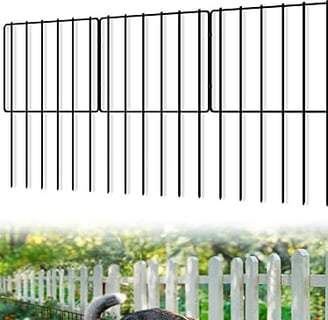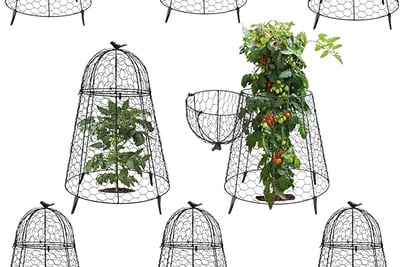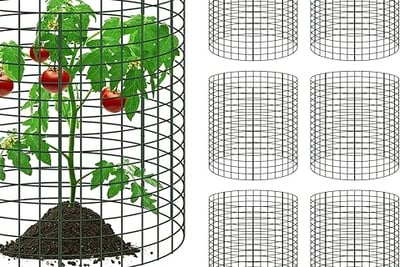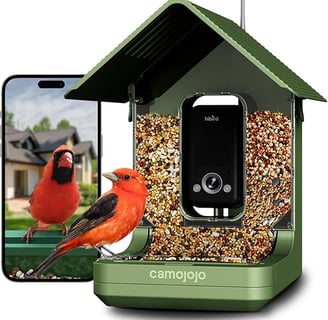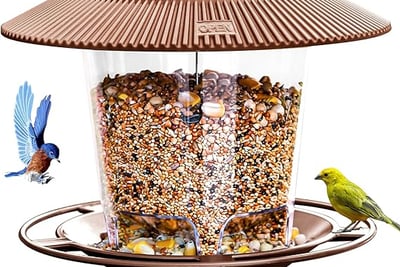Creating a Pet-Friendly Garden
8 min read


Understanding the Needs of Your Pets
Creating a pet-friendly garden requires a thorough understanding of the essential needs of your pets. First and foremost, safety is paramount. It is crucial to identify and eliminate any potential hazards within your garden, such as toxic plants, sharp objects, or chemicals. Many popular garden plants, including lilies and azaleas, can be dangerously toxic to pets. Instead, consider incorporating pet-friendly flora such as marigolds and petunias, which are non-toxic and safe for curious animals.
Furthermore, pets require ample space to play and explore. Designating specific areas of your garden for different activities can significantly enhance their experience. For instance, you might create a play zone with grass or soft mulch where they can run and enjoy their surroundings. Incorporating pathways can help guide pets through the garden while encouraging exploration of various sections. Pathways made from natural materials, like wood chips or flagstones, provide both texture and a clear route for pets to follow.
Additionally, providing hideaways is vital for your pets' mental stimulation. Structures such as tunnels or shaded areas using native shrubs can offer a sense of security while allowing pets to retreat when they need a break from play. Such spaces not only serve as places for pets to hide but also invite exploration, enriching their experience outdoors. Safe zones, like enclosed patios or fenced areas, will enable pets to roam freely without the risk of escaping into the broader environment, ensuring they can enjoy the garden safely.
By accommodating these elements - safety, space for play, and areas for exploration - you can create a harmonious garden environment that supports the well-being of your furry friends while promoting a vibrant ecosystem for local wildlife.
Designing a Garden for Wildlife Viewing
Creating a garden that attracts local wildlife can be a rewarding experience for both your pets and the environment. To ensure that your garden remains a safe haven for pets, while inviting birds, butterflies, and small mammals, it is crucial to incorporate thoughtful design strategies. One effective method is the installation of bird feeders and bird baths. These not only provide essential nourishment for local birds but also offer hours of entertainment for your pets as they observe these creatures in action. Opt for feeders that are designed to keep larger animals at bay, ensuring both the safety of your birds and the curiosity of your pets.
Another way to enhance wildlife viewing in your garden is by planting a butterfly garden. Select a variety of native flowering plants that attract butterflies while being non-toxic to pets. Plants such as coneflowers, milkweed, and asters provide nectar sources and habitat for butterflies, enriching the visual diversity of your garden. Furthermore, creating a space with varied heights and dense foliage allows for small mammals to feel secure, which can attract them as well. Maintaining a balance between open spaces for pet play and sheltered areas for wildlife will promote a harmonious coexistence.
Natural habitat creation is also vital. Incorporate elements such as logs, stones, and brush piles to provide nesting and hiding spaces for small mammals. These features not only enrich your garden’s ecosystem but also create fascinating spots for your pets to explore safely under supervision. Additionally, consider using native shrubs and trees, which have the added benefits of requiring less maintenance and being more resistant to local pests. By thoughtfully designing sections of your garden with both pets and wildlife in mind, you create an environment that supports biodiversity while enhancing the quality of life for your furry friends.
Selecting Pet-Safe Plants
Creating a pet-friendly garden involves thoughtful consideration of the plants you choose. Selecting pet-safe plants is crucial to ensure the safety and well-being of your furry friends. Many common garden plants can be toxic to pets, potentially causing serious health issues. Therefore, it is essential to research and identify non-toxic species that can flourish in your garden while providing a safe environment for your pets.
When opting for pet-friendly flora, consider incorporating a variety of flowers, shrubs, and herbs that are both safe and visually appealing. Examples of pet-safe flowers include marigolds, sunflowers, and pansies. These blooms not only brighten your garden but can also withstand playful paws. Additionally, herbs like basil, parsley, and mint are great for both aesthetics and for enhancing your culinary dishes, all while being safe for your pets to nibble on during their outdoor adventures.
In terms of shrubs, you may wish to explore options such as hibiscus and non-toxic varieties of rosemary. These shrubs can add structure to your garden, creating shaded areas for pets to relax and play. Furthermore, they contribute to a diverse environment that encourages exploration and enrichment, which is essential for your pets' physical and mental well-being.
Integrating pet-friendly plants not only safeguards your pets but also cultivates an inviting atmosphere for local wildlife. Pollinators like bees and butterflies are attracted to non-toxic plants, enhancing biodiversity in your garden. This holistic approach ensures your garden is a harmonious space where pets can thrive, explore, and enjoy nature safely. By prioritizing pet-safe selections, you can transform your garden into a vibrant retreat for both your pets and the surrounding ecosystem.
Creating Different Backyard Vibes
Designing a pet-friendly garden involves creating diverse atmospheres tailored to various experiences for both pets and their human companions. By selecting specific plants, materials, and landscape elements, homeowners can cultivate environments that evoke tranquility, playfulness, or connection with nature.
To start, envision a calming oasis. Incorporating soft, fragrant plants like lavender or chamomile provides sensory stimulation for pets while creating a serene atmosphere for owners. Consider adding pebbled pathways and natural stone seating areas where one can unwind and enjoy the ambience. Incorporating water features such as small fountains or bird baths not only enhances relaxation but also attracts local wildlife, enriching the garden's ecosystem.
For a vibrant and energetic space, focus on creating an active play area. This can be achieved through the selection of resilient grasses and earth-tone ground covers that can withstand wear from playful pets. Hardscaping elements like a sandbox, agility equipment, or a dog run can facilitate active engagements. Ensure there are shaded seating areas equipped with comfortable furniture to allow pet owners to observe their pets at play, fostering an interactive environment.
To transform the garden into a wildlife adventure zone, select native plants known to attract local wildlife, such as pollinators and birds. Planting sunflowers, coneflowers, or milkweed can promote biodiversity while providing fascinating sights for curious pets. Incorporate natural wood elements like logs and stones which not only serve as fascinating exploration tools for pets but also enhance the organic feel of the garden. Elevated seating areas, such as a cozy nook made from reclaimed wood, can provide a perfect observation point for the entire family, promoting a connection with nature and wildlife.
By integrating these various elements into your garden design, you can successfully craft distinct atmospheres that cater to different vibes. Whether seeking relaxation, play, or wildlife observation, the right combination of plants, materials, and landscape features will ensure a vibrant and inclusive pet-friendly space.
Incorporating Play Areas for Pets
Creating a pet-friendly garden involves more than just planting flowers and bushes; it requires thoughtful integration of play areas tailored to the needs of your furry companions. Dedicated play zones can not only enhance the aesthetic appeal of your garden but also provide essential physical and mental stimulation for pets. Designing these areas creatively while ensuring functionality is vital for a safe and enjoyable experience.
One excellent idea for a play area is an agility course. This can be constructed using simple materials such as PVC pipes and wooden planks, allowing your pet to navigate tunnels, jumps, and weave poles. Agility courses offer excellent exercise and engage your pet’s mind as they learn to navigate different obstacles. They can also be beneficial for bonding time between pets and their owners during training sessions.
Incorporating digging pits is another fantastic option, particularly for dogs that have a natural instinct to dig. These dedicated spaces can be filled with soft sand or loose soil, encouraging pets to dig freely without damaging the rest of the garden. To make these pits more interactive, consider burying toys or treats to stimulate your pet’s interest and engagement.
Interactive toys, such as puzzle feeders or treat-dispensing balls, can also be integrated into these play areas. These toys can challenge your pet's intellect and provide rewards for their efforts, promoting problem-solving skills while they play. When selecting toys, ensure that they are safe and appropriate for your pet's size and chewing habits.
Finally, it is essential to have these play zones designed with safety in mind. Use non-toxic materials, ensure surfaces are free from sharp objects, and provide shaded areas for pets to rest during playtime. By thoughtfully incorporating these features, you can create a rich, pet-friendly environment where your furry friends can thrive, ensuring both their physical activity and mental well-being.
Implementing Safety Measures
Creating a pet-friendly garden necessitates the implementation of various safety measures to ensure the well-being of your furry companions and the local wildlife. The first step in this process is incorporating appropriate fencing options. A durable and secure fence can prevent pets from escaping while also keeping out unwanted wildlife. When selecting fencing materials, it is essential to choose types that are tall enough and sturdy enough to deter even the most determined pets. For small animals, consider adding a buried barrier to prevent them from digging under the fence.
In addition to erecting a fence, users might consider installing barriers within the garden to protect specific areas such as vegetable patches or flower beds. Gates should have proper latches to prevent pets from easily opening them. Another effective method of securing specific zones is utilizing plant-based barriers. Thorny or dense plants can act as natural deterrents, making it uncomfortable for pets to enter certain areas while enabling you to maintain a natural aesthetic.
Moreover, it is crucial to pet-proof your garden by evaluating potential hazards, such as toxic plants and sharp gardening tools. Edible plants like tomatoes, onions, and garlic may be enticing to pets but are indeed toxic. By replacing harmful plants with pet-friendly alternatives, the garden becomes a safer space for exploration. Regular monitoring and maintenance of the garden also play a significant role in ensuring it remains a safe haven. Check for any gaps in fences, fallen branches, or debris that may pose risks to pets and wildlife alike.
Lastly, consider establishing a routine of garden inspections to identify and mitigate risks proactively. By taking these essential precautions, the garden can flourish as a safe and enjoyable environment for pets while fostering a welcoming habitat for local wildlife.
Regular Maintenance and Seasonal Considerations
Maintaining a pet-friendly garden requires consistent attention to various tasks that adapt to seasonal changes. Regular maintenance, such as pruning and weeding, not only enhances the aesthetic appeal of the garden but also ensures a safe environment for both pets and local wildlife. Pruning is essential, as it helps to remove dead or overgrown branches that can pose hazards to curious pets exploring their garden space. Additionally, regular weeding is crucial, as certain common weeds may be toxic to pets. Employing natural, pet-safe weed management solutions can further promote a healthy garden.
Seasonal considerations also play a significant role in maintaining a garden that caters to furry companions and local wildlife. Each season presents unique challenges and opportunities for the garden. During spring and summer, the focus may shift toward planting pet-safe flora that blooms beautifully, fostering an inviting atmosphere for both pets and native wildlife. Conversely, fall and winter require a different approach; it is essential to prepare the garden for changing weather conditions. This might include providing shelters such as small animal huts or specific plant arrangements that offer protection from harsh winds and freezing temperatures.
When grooming the garden, it is crucial to keep in mind the needs of pets during inclement weather. Ensuring that sheltered areas are available allows pets to seek refuge from rain or snow, contributing to their well-being. Furthermore, providing wildlife-friendly features, such as bird feeders or water sources, can supplement the diet of local animals during colder months, creating a thriving ecosystem throughout the year. Engaging with the rhythm of nature fosters a dynamic relationship between the garden, pets, and wildlife, guiding the necessary adaptations in care as seasons change.

